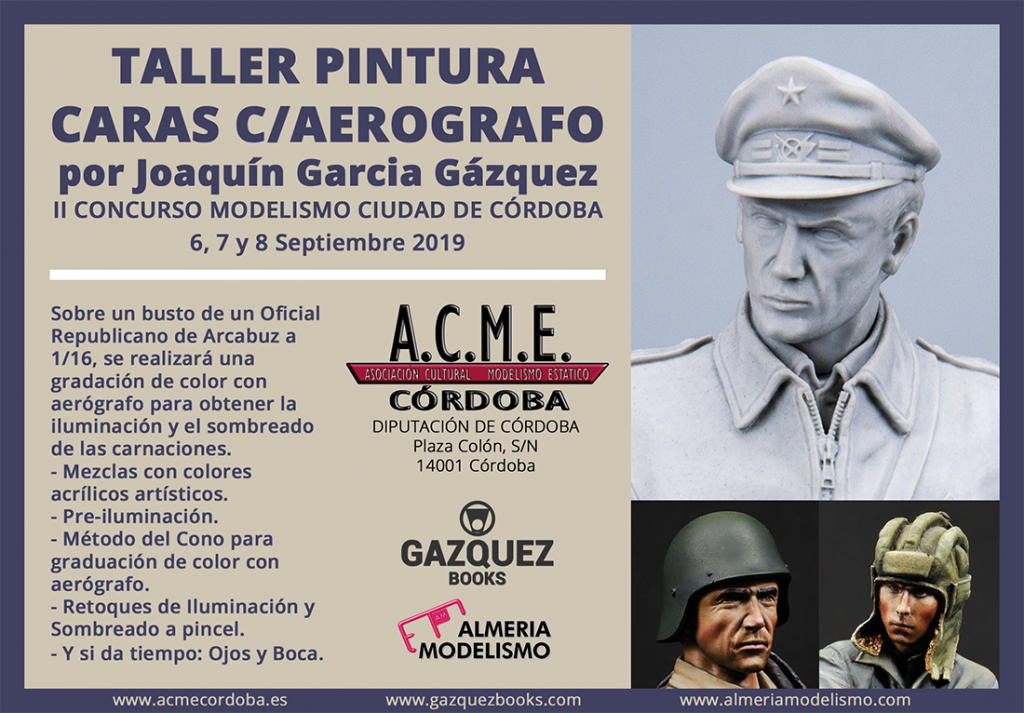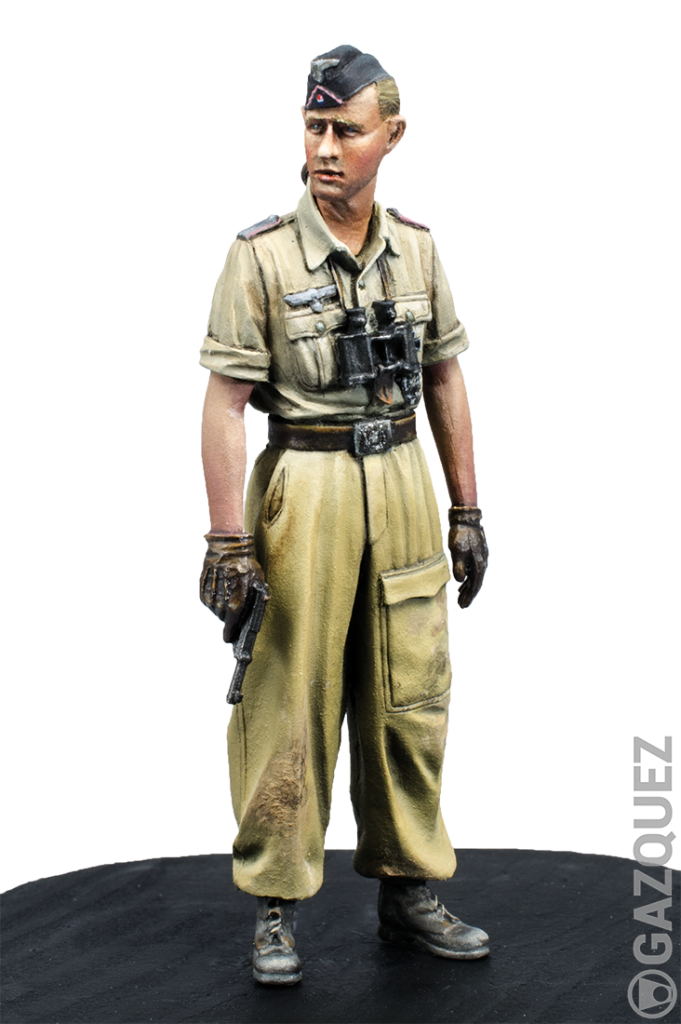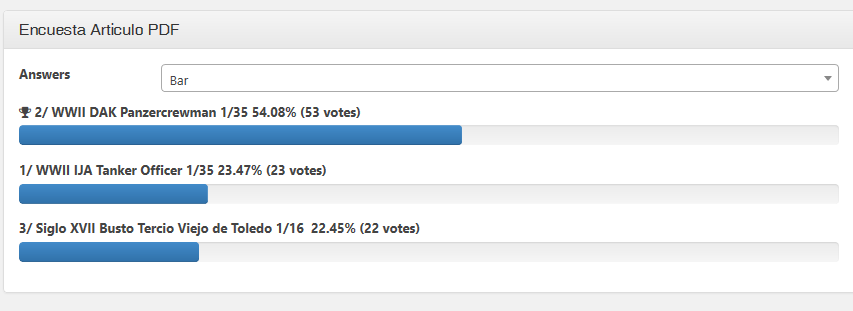Esta figura es un regalo personal de Eiji Ishii, mi editor en Japón, es una figura de edición limitada para Shizuoka Hobby Show 2019, que conmemora el 15 Aniversario de Alpine Miniatures.
Como es habitual en el fabricante, la escultura es excepcional con una reproducción sobresaliente, si a esto se une uno de los temas que personalmente me encantan como es el del Ejército Japonés de la 2ªGM, es fácil imaginar que no tardaría en pintarla.
#modelling_expands #gazquezbooks
Como es habitual se comienza con la limpieza y montaje, como ya he dicho es cuestión de minutos, limpiar las mínimas rebabas e insertar pernos de hilo de cobre de .6 mm, en un pie y en la cabeza para trabajar la figura cómodamente:
 El siguiente paso es la imprimación, relizada con «Surface Primer Black» de Vallejo:
El siguiente paso es la imprimación, relizada con «Surface Primer Black» de Vallejo:
 Lo siguiente fue estudiarme los colores, anteriores figuras de soldados japones que habia pintado con colores ya hechos, no me habian convencio, decidí investigar un poco y gracias a a Kazuya Yoshioka, un extraordinario modelista japonés, me pasó un BLOG, donde se puede ver la prenda en cuestión.
Lo siguiente fue estudiarme los colores, anteriores figuras de soldados japones que habia pintado con colores ya hechos, no me habian convencio, decidí investigar un poco y gracias a a Kazuya Yoshioka, un extraordinario modelista japonés, me pasó un BLOG, donde se puede ver la prenda en cuestión.
No soy un fanático de los colores, y menos en prendas de vestir, las variaciones como es fácil de comprobar son casi infinitas en matices y tonos, así que tras unas pruebas obtuve una gradación de color que resultaba apropiada y me gustaba:
 A continuación comienzo con la pintura, en primer lugar pinté la cara, de la que en ese caso no hablaré, ya que me quiero centrar en el proceso de aerografía, comenzando por el color base:
A continuación comienzo con la pintura, en primer lugar pinté la cara, de la que en ese caso no hablaré, ya que me quiero centrar en el proceso de aerografía, comenzando por el color base:


A continuación las luces, estas se han aplicado según el «Método del Cono», que explico clara y detenidamente en mi Libro «Figuras 2ª Guerra Mundial», aplicando la pintura muy diluida desde arriba cerrando el ángulo de aplicación en cada subida de luz, tras dos subidas así queda la figura:
 Tras otras dis subidas, siguiendo las mezclas que se desarrollan en el Estudio de Color, termino (por ahora) con las luces:
Tras otras dis subidas, siguiendo las mezclas que se desarrollan en el Estudio de Color, termino (por ahora) con las luces:
A continuación, siguiendo el mismo proceso se aplican la sombras, proyectando con el aerógrafo desde abajo:


Tras la cuarta bajada así queda la figura:


Para terminarse dan otras dos bajadas, también se aplican unos filtros con aerógrafo cargado del color base muy diluido, para eliminar saltos de color bruscos o innecesario, para ver el conjunto coloco la cabeza en su posición, analizando el resultado y dando por finalizado el proceso con aerógrafo:
Próximo paso perfilados y remate a pincel.
Espero os haya gustado.




















































